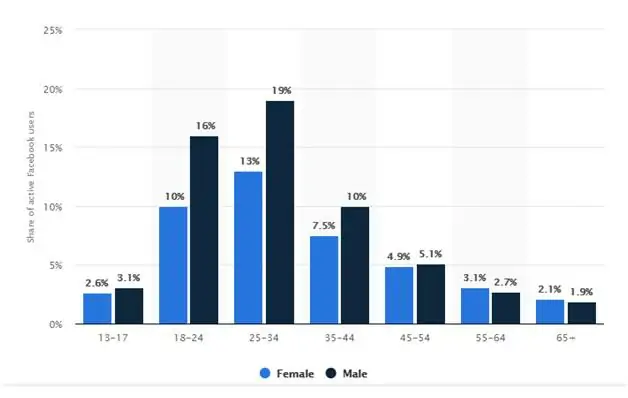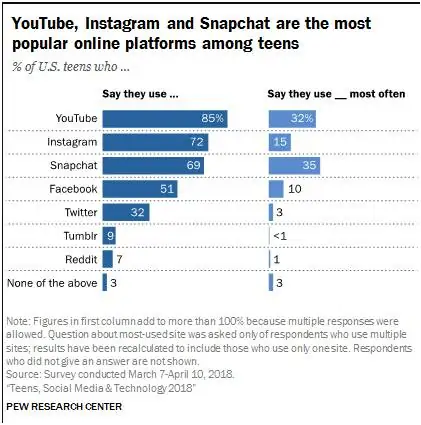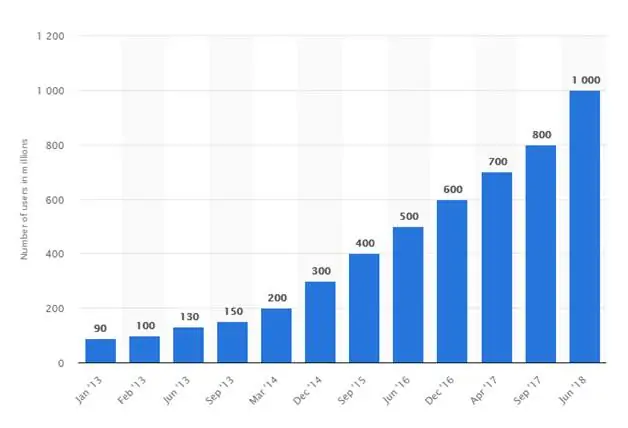Social media has changed the way marketing is done. Because of its accessibility and relatively cheaper costs, businesses have increasingly leaned towards social media over traditional media for their marketing efforts.
Below is a lowdown of what social media marketing is, its different aspects, and everything else a beginner has to know.
What is Social Media Marketing?
In its most basic sense, social media marketing is the use of social media to promote anything – from brands, products, and services, to causes, events, and everything in between. And because there are an estimated 2.77 billion people on social media, it’s become essential for businesses to maintain a presence on multiple platforms.
It’s not just that people are on different social networks, it’s also how much time is being spent on it that makes it such a crucial communication channel for businesses to leverage. One study found that in 2018, people spent an average of 2.22 hours on social media—a number that has been on steady climb since 2012.
Social media has revolutionized the way people communicate and connect with each other – be it personally, or for business.
The Platforms and its Numbers
According to Statista, the highest concentration of Facebook users were those aged 18-44, with the biggest segment from that group at 19% being males aged 25-34. As you can see below, while it’s become common perception in the US that younger users are straying away from the platform, the demographic remains relatively young for global Facebook users.

It’s important to note, though, that if you’re looking to target teens, the social media giant may not be the best network to concentrate on, as only 51% of teens use Facebook. That number is behind YouTube, Instagram, and Snapchat.

Speaking of Instagram, it’s considered the fastest-growing network, recently reaching 1 billion monthly active users. As you can see below, since the launch of its Stories format in 2016, its monthly active users has increased by 40%.

In the US, Instagram is the preferred platform of teens and young millennials, with more than half of its user base belonging to the 18-29 age group. Globally, 41% of Instagram users are 24 years old or younger.
The platform has become so popular in recent years that by the end of 2019, Instagram is expected to account for nearly a quarter of Facebook’s total ad revenue.
The 2006-founded company finds itself in a tricky spot as the decade comes to a close. While there are still around 500 million tweets sent per day from its 326 million monthly active users, user growth is predicted to be at less than 1% in the US.
However, it doesn’t mean that Twitter has lost its market. Eighty percent of Twitter users are affluent millennials, while 71% of its total user base use the platform to read the news. And that’s no surprise as according to a 2018 Twiplomacy study, 187 governments and heads of state maintain an official presence on Twitter.
While we’re on the subject of niche markets, LinkedIn has a distinct hold in the field of business. Of its 303 million monthly active users, 90 million are senior level influencers, while 63 million are in decision-making positions. This has made it popular platform for exploring career options.
LinkedIn is also the #1 channel B2B marketers use to distribute content. It’s no surprise then that the platform makes up more than 50% of all social traffic to B2B websites and blogs.

Bonus fun fact: It also appears to be where successful people network, with 41% of millionaires using LinkedIn.
YouTube
There are over 1.9 billion monthly active users on YouTube. Meanwhile, the average viewing session on the video streaming platform in 2018 is 40 minutes – up 50% year-over-year.
But here’s where its power lies:
• 37% of the crucial 18-34 demographic binge-watch on YouTube.
• Millennials prefer YouTube two to one over traditional television.
• Meanwhile, 35+ and 55+ age groups are the fastest growing demographics on the platform.
It’s safe to say that YouTube has revolutionized the way people consume video. And it’s interesting how it will look to evolve as everyone tries to mimic its streaming blueprint.
Key Departments in Social Media Marketing
Before we discuss how you can start social media marketing, let’s first take a look at its key elements. And while for smaller companies, the roles below may fall under the umbrella of a sole social media manager, it still bodes well to distinguish the following:
Community Management
This role is important because it focuses on the very essence of social media – nurturing meaningful connections. For a social media strategy to have a chance at being effective, brands need to establish relationships with its customers. And for smaller brands, this is often where the customer journey begins.
Once a relationship is established, the role of community management evolves to growing and engaging an audience. And as the customer continues to go through the different stages of the journey, an ideal community management should unceasingly cultivate and nurture those existing relationships. This affords brands opportunities to eventually convert audiences.
Strategy and Analytics
The great thing about social media is that it provides an abundance of data, one that can only be amplified by using third-party analytics. But it needs to be noted that, ideally, you should use social data analytics to inform your marketing strategy and not the other way around.
And even if you’re starting off with a blank slate, there’s no excuse not to adhere to this. There are a number of tools you can use to analyze what your competitors are doing. While not every data can be applicable to your own brand, you’re at least going to have base data to operate with – tweaking tactics and approaches as you go along.
Be it to analyze which platform is optimal to achieving your goals, which key performance indicators (KPIs) to track, or which types of content to produce – analytics should be the driver of the strategy you’re going to craft.
Content Creation
Speaking of content, content creation is one of the most important aspects of your social media marketing strategy. It’s what engages your audience – be it through educating or entertaining them – and what keeps them coming back for more.
It’s also integral to a customer’s thought process at the early stages of their customer journey. It’s how you can answer questions like:
• What is ____ ?
• How do I ____ ?
• Where can I ___ ?
These questions will differ depending on which stage customers are in. But wherever they may be on their journey, content creation can cater to them.
How do I start social media marketing?
Social media marketing is something you need to commit to if you’re enjoy any modicum of success. And while there are a number of elements that you’ll need to dive into as you go deeper into the practice, here are the basics:
Identify your basic goals and objectives
As with any marketing strategy, you need to understand what it is you want to accomplish before you can begin. Establishing these will guide the rest of your social media strategy. Do you want to create awareness? Increase your reach? Build a community? Boost sales?
It can be all of the above. But identifying your objectives enables you to have a structure in which you can act accordingly.
Start small
It may be tempting to create accounts for all the available platforms. It would also be counterproductive. Start small, and establish a presence on one or two platforms. Ideally, you should have a main platform, and use the second one to complement your primary one.
Hone in on a target audience
Similarly, you can’t try to speak to everyone. To be able to optimize your use of social media, you need to identify who your audience is. This will allow you to create content that’s tailored to a specific audience. This, in turn, will make your content more relatable, and therefore, more engaging.
Build a team
If you’re just starting out, a team could start with just two people—and that’s ok. As you get more seasoned in the practice, you’ll be able to identify which areas need more focus, which will then require you to delegate tasks, ultimately growing your team.
Track early returns
The good thing about starting out with social media marketing is that there are infinite ways to grow. To be able to do this, though, you need to track your performance early on. If you find that a certain type of content isn’t resonating with your audience, change up your approach.
Perhaps your audience responds more to stories. Maybe a different tone relates to them more. Test, track and tweak – you’ll come across the right formula if you just keep at it.
Social Media Marketing Best Practices
Engagement Strategies
There are a myriad of ways you can boost engagement on social media. But at the core of it is in providing value. Talk about your topic and not just your brand. For example, if you’re an athletic apparel company, you can produce videos of workouts your audience can do at home. This encourages them to make what your brand stands for a lifestyle, fueling both interest and the conversations.
Social listening is also key. You need to interact with your audience in order to find out what truly interests them. So whether it’s in the comments of your own posts, or looking at what people are talking about on social, putting your finger on the pulse of your audience is a sure fire way to increase engagement.
Posting Frequency
You will find different studies online of what the optimal posting frequency is. But the truth is, what worked for other brands doesn’t necessarily mean it’s going to work for you. But while there is no magic formula, there are a few universal truths.
• Aim for consistency instead of frequency – Come up with a posting schedule (say, twice a day), and stick to it until the data proves it to be ineffective. Algorithm changes have made appearing in your audiences’ feed increasingly difficult. Let them come to you by consistently posting things that are worthwhile. Speaking of which…
• Quality over quantity – Posting for the sake of posting doesn’t work anymore. If audiences don’t see any value in your posts, they’ll eventually learn to tune you out. This is why should have its distinct quality. Even a short story using a smartphone’s front camera can be effective if it has a purpose. Which brings us to…
• Set goals – always – It doesn’t always have to be the highest production value, particularly at a time when people lean towards authenticity. But it does need to be aligned to goals and objectives. Whether it’s a quick story to announce an event, or an extensive blog post about a popular topic, make sure that each post is part of a plan.
Consistent Branding
In the noise and haze of social media, consistency in everything you do enables you stand out from the crowd. Whether it’s with your brand voice, the certain look of your content, or the messaging—make sure that it’s always on brand. This will allow your audience to immediately recognize you amidst the infinite stream of content.
Social Media Integration
Social media should not only connect your brand with your audience, it should also be connected with the rest of your marketing efforts. It could be through social buttons on your website and emails, social sharing options on your content, or even embedding your Instagram photos on your website.
This is aligned with consistent branding – enabling all your marketing assets to be consumed and shared as seamlessly as possible.
Social Listening and Crisis Management
We’ve touched on social listening earlier as a means to understand your audience. But it’s also a useful practice to keep your finger on the pulse of what people are saying about your brand. It could be as simple as getting in touch with an unsatisfied customer, or releasing an official statement to address a PR situation. Whatever it may be, social listening can do wonders for nipping potential issues in the bud.
Social Media Analytics
Again, the great thing about social media for marketers is that its analytics allow you to tangibly measure performance. It also helps for goals to be set and met, and shows areas of improvement. There’s no shortage of third-party tools to help you get invaluable insights on your social media marketing. All you need to do is understand exactly what it is you’re looking for.
Recommended Social Media Marketing Tools
Content Creation
• Tailwind
• BuzzSumo
• Tagboard
Monitoring and Sharing
• Sprout Social
• SocialOomph
• Brand24
Analytics
• Followerwonk
• Agora Pulse
• CrowdBooster
FAQs
How much does social media marketing cost?
If you’re looking to outsource work for a comprehensive social media marketing strategy, the industry average in the US is $4,000 to $7,000 per month.
What are the disadvantages of social media marketing?
One thing that stands out is the potential for negative feedback to spread. If you’re not able to address bad publicity right away, it can really do damage to a brand. Another thing is that it takes time to see actual results. Yes, your following can grow exponentially in just six months, but for you to really see it affect your bottom line, it will take a while.
How do I start a paid social media campaign?
Again, you need to identify what your goals and objectives are when it comes to social media. Once you identify those, do your research on firms – the work they’ve done and how much they charge.
